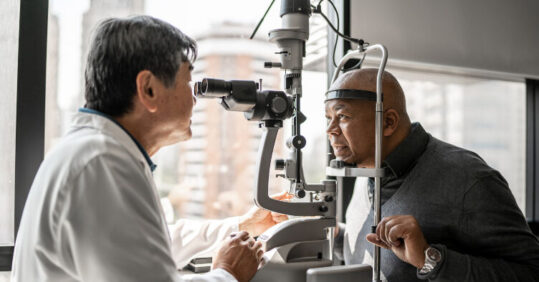Eye scans detect signs of Parkinson’s disease up to seven years before symptoms emerge

Data collected from the eye can show the presence of Parkinson’s disease up to seven years before symptoms emerge, according to new research.
Using eye scans to pick up early indicators of the disease, researchers could identify markers of Parkinson’s, which are otherwise imperceptible to patients or doctors, years before clinical presentation.
Related Article: Action needed to tackle untreated hearing loss in care homes
This is the most extensive study looking at retinal scanning as a tool to detect Parkinson’s, involving researchers from the UK, the USA and Spain. The findings are published in Neurology and open up new possibilities for treatment.
Parkinson’s disease is a condition that affects around 0.2 per cent of the global population and is caused as the brain becomes progressively damaged over time. Symptoms include involuntary hand shaking, stiff and slow movements and memory problems. Eye scans have previously revealed signs of other neurodegenerative conditions like Alzheimer’s, multiple sclerosis, and schizophrenia, as well as successfully indicating increased risks of high blood pressure, cardiovascular disease, and diabetes.
The researchers examined retinal images and associated clinical data from the AlzEye database and used Artificial Intelligence (AI) to identify markers of Parkinson’s in the eye scans. The findings were confirmed using a broader data set from the UK Biobank database of healthy volunteers.
Related Article: ‘Alarming’ health inequalities between older people in the North and South of England
Eye scanning, a routine part of eye care, uses techniques such as optical coherence tomography (OCT), which creates a 3D eye scan in less than a minute. This allows researchers to non-invasively examine layers of cells beneath the skin’s surface with incredible precision, providing information about eye health and giving insights into the general health of the whole body.
Professor Alastair Denniston, a consultant ophthalmologist and honorary Professor at the University of Birmingham who was involved in the study, said: ‘This work demonstrates the potential for eye data, harnessed by the technology to pick up signs and changes too subtle for humans to see. We can now detect very early signs of Parkinson’s, opening up new possibilities for treatment.’
Related Article: Sundowning in dementia: what nurses can do to support patients
Dr Siegfried Wagner, principal investigator for this study from Moorfields Eye Hospital and University College London, added: ‘I continue to be amazed by what we can discover through eye scans. Finding signs of a number of diseases before symptoms emerge means that, in the future, people could have the time to make lifestyle changes to prevent some conditions arising, and clinicians could delay the onset and impact of lifechanging neurodegenerative disorders.’

See how our symptom tool can help you make better sense of patient presentations
Click here to search a symptom




